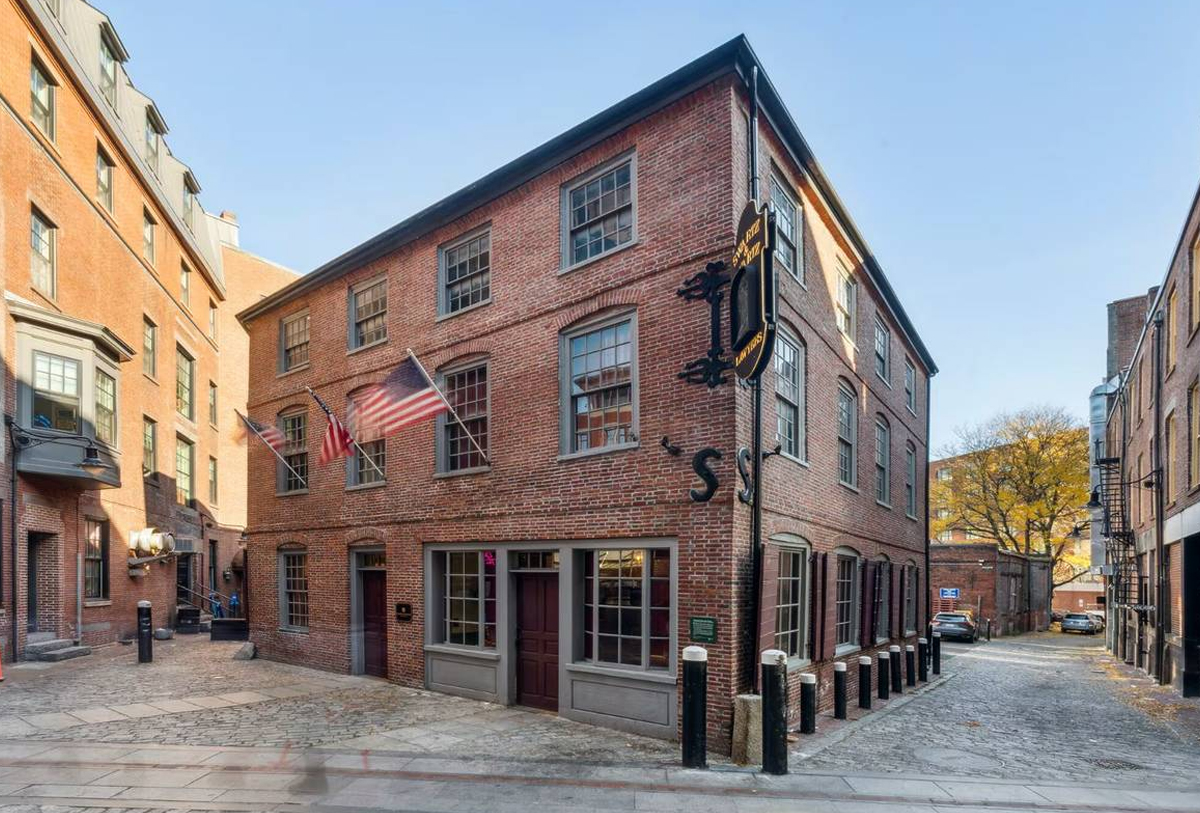
Now you can purchase a rare monument of American history. The Hancock House, a 1767 brick structure that was built by John Hancock, has been put up for sale for the first time in over five decades.
The 5,748-square-foot building, at 10 Marshall Street, has the distinction of being the only building in Boston that is directly connected to the Founding Father. The sale organized by Land Vest provides a unique opportunity to those who wish to acquire historic property that has artistic and cultural significance. The asking price, however, is not disclosed publicly, and interested parties are directed to request details and schedule a tour through the LandVest site.
The Hancock House is a rare surviving example of Later Georgian vernacular architecture in central Boston. Constructed with red brick, the building has retained its original form and detailing over more than two and a half centuries.
According to the listing, “many of the Later Georgian interior details still remain intact,” including exposed timber ceiling beams, wood paneling, and brick walls that reflect the construction style of the mid-18th century. It is listed on the National Register of Historic Places, and LandVest describes it as “the only vernacular structure dating to the mid-1700s to survive in central Boston.”
The Hancock House is a three-level structure that is currently used as a work office, with 12 personal offices. The layout of these rooms has evolved over the years and still allows it to be used commercially without harboring the historic character of the building.
Although the old structure has been mostly preserved, the Hancock home was largely extended in the 1970s to suit its modern purpose as a law office. The Swartz and Swartz law firm has occupied the building since then, and the long-term commercial purpose has preserved the structure.
Hancock House has been used in many ways throughout its life. After its construction in 1767, it was used as a residence by Ebenezer Hancock, John Hancock’s brother and a deputy paymaster in the Continental Army. During the war, the house reportedly held two million silver crowns from the French government, which were distributed to troops under Ebenezer’s oversight.
The property eventually fell into commercial hands. A 1977 study by the Boston Landmarks Commission illustrates that in the 19th and 20th centuries, the building was used as a shoe store, tavern, restaurant, museum, and boardinghouse.
The Hancock House is located along the Freedom Trail, a historic heritage path that attracts thousands of visitors every week in Boston. The fact that the area surrounds City Hall, Faneuil Hall, North Station, and several MBTA stops puts it at the center of historic and civic life in Boston.
The listing notes that the property is “a fixture on Boston’s iconic Freedom Trail” and is within walking distance of the North End, the Waterfront, and Boston Harbor commuter ferry services.
It has a mixed-use zoning, making it flexible for future use. The Hancock House is currently in use as an office, but can be converted by its prospective owners into a home-living or cultural venue, with city permits. Its footprint, condition, and zoning allow for significant creative and practical possibilities.
Boston’s most recent assessment values the Hancock House at $1.65 million. However, properties with direct links to America’s founding and this level of preservation often command a premium. As no public listing price is available, the actual sale value will depend on private negotiation and the buyer’s vision.
Buyers interested in acquiring the Hancock House are required to contact LandVest directly to request pricing information and arrange a tour.
John Hancock’s more opulent home on Beacon Hill no longer exists. The Hancock House at 10 Marshall Street is the final surviving building in the city connected to his legacy. Built on land Hancock inherited in 1763, it has weathered centuries of change while remaining structurally sound and historically relevant.
Though Hancock did not live in the house himself, his role in its construction and his brother’s occupation of the property during the Revolutionary War position the Hancock home as a significant historical site. Its authenticity has been preserved not only in structure but also in story.
As Boston continues to evolve, the Hancock House remains rooted in a specific place and time. It reflects the city’s architectural past and the nation’s founding. Its sale marks a rare opportunity to own one of the oldest, most intact examples of colonial construction in downtown Boston.
Share this article: